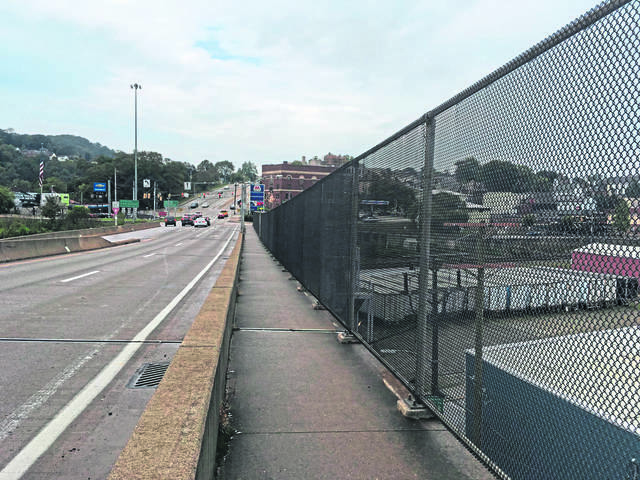https://triblive.com/local/valley-news-dispatch/judge-rules-in-favor-of-company-wanting-to-place-billboard-at-tarentum-bridge/
Judge rules in favor of company wanting to place billboard at Tarentum Bridge

An Allegheny County judge ruled in favor of a company wanting to place an electronic billboard at the Tarentum end of the Tarentum Bridge.
Common Pleas Judge Joseph M. James reversed the decision of the borough’s Zoning Hearing Board denying a permit application by America First Enterprises, doing business as Oliver Outdoor, to erect the billboard beside the bridge.
James further found the company is entitled to place the billboard at that location and ordered the borough to issue a permit for it.
Oliver Outdoor attorney Maureen Sweeney and Larry Loperfito, solicitor for the Zoning Hearing Board, could not be reached for comment Monday.
A representative of Oliver Outdoor did not respond to a request for comment.
Borough solicitor David Regoli said he suggested council should discuss its legal options in an executive session closed to the public after its regular monthly meeting Tuesday.
Oliver Outdoor has been arguing for more than two years before borough officials and in court for the right to place a billboard at the bridge, which PennDOT says is used by about 30,000 vehicles daily. It began in January 2019, when the borough’s code enforcement officer refused to issue a permit because the land the pole would be placed on at 107 E. Fourth Ave. is in a zoning district where billboards are not allowed.
While the company has argued the borough’s zoning ordinance is unconstitutional because it said the ordinance effectively does not allow billboards anywhere in Tarentum, the Zoning Hearing Board in June ruled that was not the case after James ordered the board to reconsider the matter. The company appealed that decision to court.
In his opinion and order, James found there is a de facto exclusion of billboards in Tarentum because of “inherent conflicts, contradictions and errors” in the zoning ordinance, including zoning districts not shown on the map, zoning districts that are not listed as authorized, and references to sections of the ordinance that do not exist.
The decision notes borough Manager Michael Nestico testified that two different versions of the ordinance are online, admitting one is inaccurate and had numerous conflicts with a copy sold to the public. Nestico admitted “there was no way for appellant to find the correct zoning map.”
As a result, James found “it is impossible for any property owner in the borough to discover under the published available ordinance and map, printed or online, where billboards are permitted due to the multiple conflicts, ambiguities and inconsistencies.”
James cited the Pennsylvania Municipalities Planning Code, which says any ambiguity in a zoning ordinance must be construed in favor of the property owner and against any disputed restrictions.
“A municipality has a duty to create a zoning map that clearly delineates zoning district boundaries so that individuals can rely on the zoning map when making land use decisions,” James’ order said.
“Here, the evidence established that … the errors had not been corrected,” the decision said. “A municipality that fails to create a zoning map that clearly delineates zoning district boundaries may not place the onus of that failure upon an applicant.”
Copyright ©2025— Trib Total Media, LLC (TribLIVE.com)
